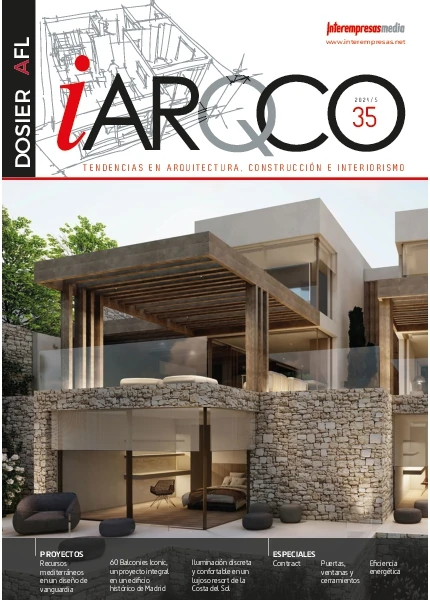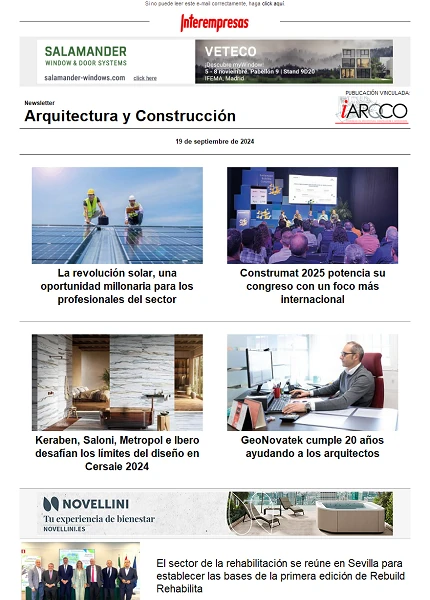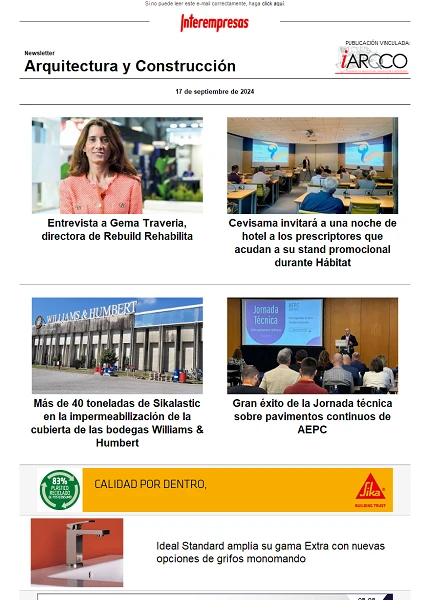The concrete pretensado in Stratford, London 2012
7 October 2011
The velodrome is an elipse with an inner track of 250 metres/meters, built partly with pine of Siberia, very durable. They consider it the fastest track of the world; because of his degree of inclination, will attain new sportive marks.With capacity for 6.000 viewers, in past February remained finished this installation, after 23 months of works.
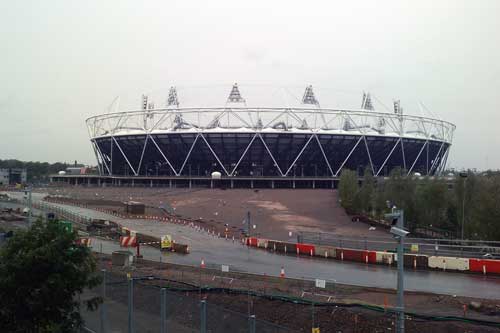
The olympic stadium remained finalised/finalized in April. It will be able to house 80.000 viewers, has a central lawn of 360 square metres/meters and has cost 3 years of works. The space is something elliptical (315 x 256 metres/meters) and for his construction has employed 10.000 tonnes of steel. It treats of the lightest stadium never built.
The only building in that it has not employed the concrete pretensado is provisional and will be dismantled on 9 September 2012: the Basketball Sand, designed by Wilkinson Eyre. The equipment has a capacity of 12.000 viewers and has built with a membrane recubierta by PVC white. Some arches of steel sustain the techumbre. At the side of the big buildings has built a populated olympic for 2.800 athletes.
Eugène Freyssinet
When in 1920 presented his patent on the concrete pretensado, could not imagine his success, first in the construction of bridges, and afterwards in the buildings until 2011, before fulfilling/fulfilling the first centenary. His first success was in 1913, when building the bridge Boutiron on the river Aller. It used wires of high resistance, with a load to the split of 18.000 kilos/square centimetre/centimeter, and an elastic limit of 12.600 kilos/square centimetre/centimeter. Freyssinet Produced coin conical for the anchorages of the extremes and designed cats of double action, which tightened the wires and presionaban the male cones and female, to anchor them to the plates of anchorage.
In 1918 prefabricated the helmet with HOP of 15 fuselages of 55 metres/meters of eslora, in the port of Ruán. In 1947-50 it built 5 identical bridges on the river Marne, all they of 74 metres/meters of light. In 1945, in Spain, Pacadar prefabricates the first beam pretensada. Eduardo Torroja boosted the pretensado and, in 1954, founded the Spanish Association of the Concrete Pretensado. In 1958 substituyó to Freyssinet in the presidency of Fédération Internationale of the Précontrainte, founded by Freyssinet in 1952.
A lot of countries adopted the HOP: in Germany, 80% of the bridges were of HOP; in 1957-1960 EE UU built 2.052 bridges with HOP; the bridge more afamado was the Walnut Lane Bridge (1951), in Philadelphia; in 1962 it builds in Mexico the Coatzacoalcos, of 996 metres of length, with stretches of beams pretensadas of 32 metres —and a stretch of metallic armour levalizo of 66 metres of light— supported in batteries of armed concrete. From the decenio 1960-70 the HOP begins to employ in houses of a lot of plants and in nuclear reagents. It appears a new property of the HOP: the protection against earthquakes.
Armours/Armors pretesas and postesas
The success of Freyssinet has because of the continuous progress of the patent of 1920. The original design bases in the construction of structural elements of concrete, subjected intencionalmente to efforts of compression, previous to his put in service. With this technician surpasses the natural weakness of the concrete in front of efforts of traction. The resistance to the traction of the conventional concrete is 10 lower times that the resistance to the compression.
The concrete pours around sinews tightened. This method avoids the oxidation, and allows the direct transfer of tension. The concrete cured adheres to the bars and, when the tension frees , is transferred to the concrete in shape of compressesion by means of the friction. It requires strong points of external anchorage, between which the sinew pulls . The majority of elements pretensados are manufactured in workshop and have to be transported to the place of construction, which limits his size. It treats of lintels, losas of flat, beams of foundation or pilot. The alliance of the concrete with the steel has been a success.
‘Postensado' Is the term that employ for the compressesion after the poured and back process of dried in situ of the concrete. In the interior of the mould of concrete places a pod of plastic, steel or aluminium. Once that the concrete has toughened , the sinew happens through this pod and is tightened with hydraulics cats, that react against the own piece of concrete. When the sinew has pulled the sufficient, this remains trapped in his position by means of coin, or another system of anchorage. It keeps the tension afterwards that the hydraulics cats withdraw , transferring like this the pressesure to the concrete. Like this, they create losas monolithic horizontals in the construction of houses, in where the floor creates problems for the perimeter of cimentación.
In the conventional concrete his scarce resistance to the traction suple placing steel of reinforcement in where they are used to to appear tractions: it is the armed concrete. This method does not prevent the apparition of cracks of the concrete, for some levels of load.
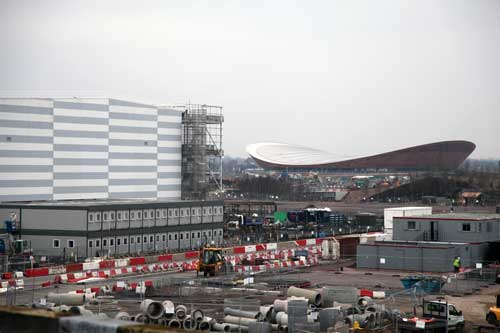
Concrete autocompactante (HAC)
Is the last advance of the concrete of Freyssinet. In Spain the promociona Cemex Spain. In the last years the architects sue improvements in finishings and new mechanical provision. The answer has been the HAC, an innovative product that possesses the capacity to flow of free way in cool state and of not needing compactación in his placing. By the own compactación gravitational, is able to occupy all the rincones of the formwork, even in the horizontal parts, ensuring of this way the homogeneity and the good quality of the structure.
The technology of the HAC has been possible thanks to the new additives superplastificantes. They are compound chemists that modulate, increase the viscosidad. They contain sour policarboxílicos or policarboxilatos. The fact that the HAC do not need vibrated supposes big advantages with regard to the conventional concrete. In spite of having a cost of greater material, produces a hand-held saving of work and necessary equipment for the compactación, reducing besides the terms of execution, by the agility of his process of hormigonado. To the hand-held saving of qualified work, time and machinery it is necessary to add the greater speed of execution and the saving of back finishings, all which compensates the difference of cost. The composition of HAC presents a high dosage of sand and fine, and a reduction of water concerning the normal concrete.
His durability is intimately related with the permeabilidad of his surface. The absence of vibration and the elder contained in fine of good quality (go through a sieve of 63 millimetres) confer a greater compacidad to his granular structure. As it has less porosidad, HAC allows a greater protection of the external agents to the interior, like chlorides and sulphates.
There is not deterioration of armours/armors, avoids the training of stains of oxide and, eventualmente, the break of the surface of cubrición by the effect of the increase of volume of the steel oxidado, a special quality for aggressive environments. The HAC is especially indicated for the realisation/realization of concretes seen, where the appearance and the final finishing have a significant weight. The behaviour/behavior in front of cycles ice-thaw is similar to the conventional concrete. Of course, the HAC can be concrete pretensado.
References:
-Garcia Gasco, S. Skin of concrete, Cemex Spain, 2009
-Nawy, And. Prestressed Concretise/Concretize, Prentice Hall, 1989
-Nilson, To. Design of Prestressed Concretise/Concretize, John Wiley & Sons, 1987
-Spanish Instruction of the Structural Concrete, 2008.


